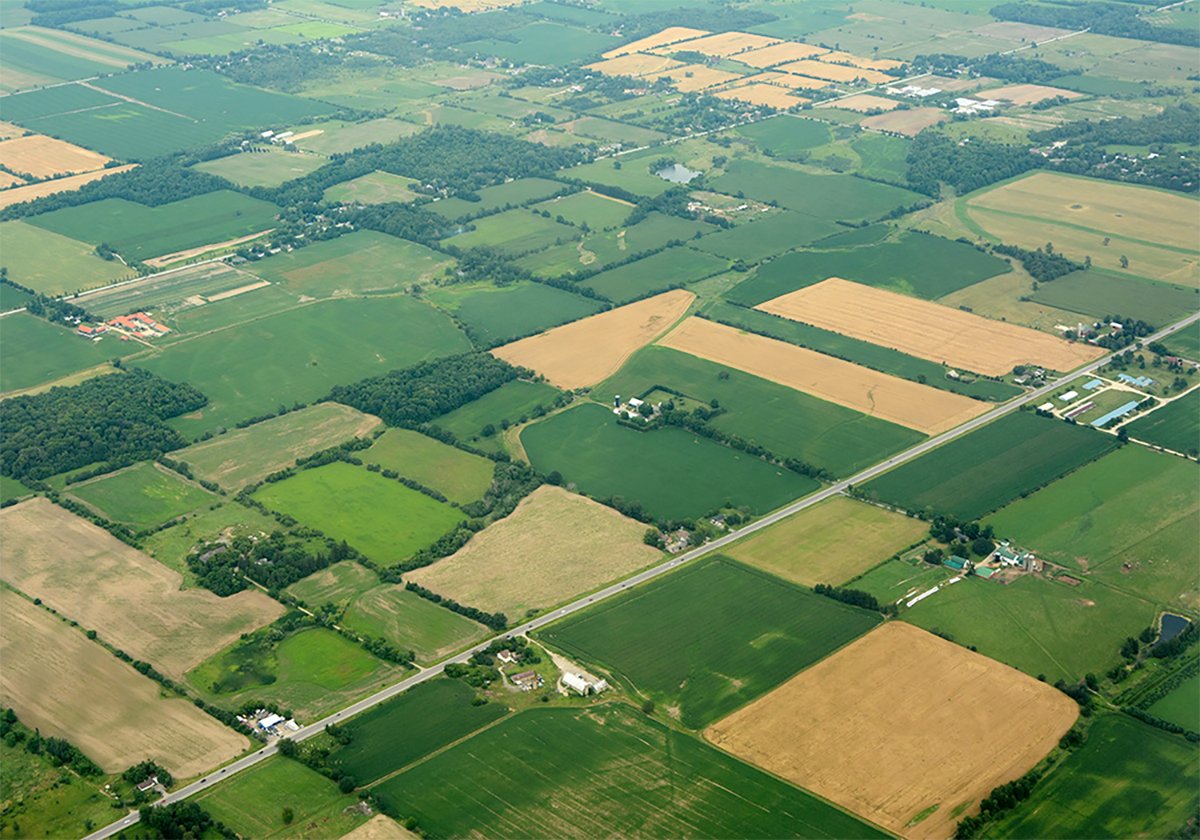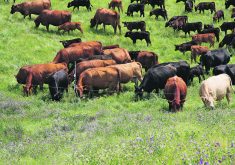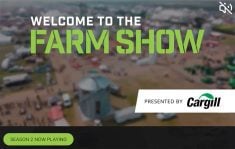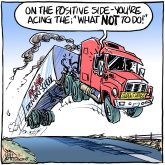Supports program; Voters list; Wheat acreage; Perhaps a test?; Good farriers
Supports program
Re: “Animal care rules now mainstream,” Western Producer, April 23.
The Canadian Federation of Humane Societies would like to clarify its involvement in the Chicken Farmers of Canada’s animal care program.
This article stated that the program is “endorsed by the Canadian Veterinary Medical Association and Canadian humane societies.”
In fact, the wording agreed to by the CVMA and the CFHS, that is included in the manual is: “The Canadian Federation of Humane Societies and the CVMA have reviewed and support the implementation of the Chicken Farmers of Canada’s Animal Care program.”
Read Also

Higher farmland taxes for investors could solve two problems
The highest education and health care land tax would be for landlords, including investment companies, with no family ties to the land.
Although the CFHS is not able to fully endorse the entire content of the manual, we sincerely commend the CFC for their progressive approach.
We recognize that this program encourages producers to achieve higher standards of welfare for their animals.
– Shelagh MacDonald,
Canadian Federationof Humane Societies, Ottawa, Ont.
Voters list
Having read Henry Vos’ opinion, “We need CWB election reform” in the May 7 Western Producer, I find it hard to believe he actually won a Canadian Wheat Board director election.
He must have done so without bothering to look at the voters list which he was given. How else could he now make a statement like, “one reason for the excessive number of permit books is because producer car shippers and those with small holdings gain a delivery advantage if their family takes out a number of permit books”?
If Henry thinks producer car shippers take out unusual numbers of permit books, he can’t know many producer car shippers. I know lots of them, big, small and in between. Our short-line railway is home to many farmers who load cars, both at trackside and through facilities. …
Henry also declared that “large farmers are more likely to be incorporated, in which case they are limited to one permit book.”
I also ran in the last CWB election and had access to the voters list for my district at that time. I was quite interested then in the issue of who holds permit books because the perennial losers in these elections, the majority of anti-CWB candidates, generally explain their losses by complaining about the voters list.
I went through mine carefully to get a picture of who holds how many books. The farmers (listed in an edited portion of this letter) are not small by anyone’s calculation, and none are incorporated. In fact, incorporations were fairly rare in all places in my voters list. They were also not limited only to large farmers.
Nor did incorporation mean those farmers only held one permit book. I believe the record I saw was one farmer, judging by the box number, which was the same for all books, who had two corporations and five individual permit books.
There was every combination of name imaginable. Nor, it might surprise Henry, was this fellow a CWB enthusiast.
The fact is, in my experience, most small farmers and producer car shippers are not anywhere as sneaky as Henry might suppose. It makes me wonder if he shouldn’t hang out with a better class of people.
– Paul Beingessner,
Truax, Sask.
Wheat acreage
Would wheat acreage in Western Canada really soar if there were an open market for prairie wheat? The Western Canadian Wheat Growers Association says so, and points to Ontario as evidence.
In fact, the general upward trend in Ontario’s wheat acreage began decades before the end of Ontario’s single desk in 2003.
If an Ontario farmer chooses to plant wheat, it likely has more to do with the price of corn, the price of fertilizer and fall planting conditions.
The WCWGA compares Ontario’s 2002 harvested wheat acreage to that of 2008 and attributes the increase to an open market.
However, seeded acres are obviously a better indication of farmers’ intentions. The last time Ontario farmers sowed wheat in a single-desk environment was the fall of 2002, when they seeded one million acres to wheat. In 2003, 2004, 2005 and 2008, they seeded significantly fewer acres to wheat. Was this also because of the demise of the single desk?
The truth is that fundamentally different market factors make it hard to compare wheat production in Ontario and on the Prairies in any meaningful way.
Ontario grows more soft wheat; the Prairies grow more hard wheat. Ontario wheat is sold close to home; prairie wheat is sold around the world.
If the WCWGA is interested in a valid comparison of wheat acreage trends, it should look to the U.S. northern tier states where farmer decisions are motivated by similar market factors. For the past decade, wheat acreage in the northern tier states has moved in unison with wheat acreage in Western Canada.
– Larry Hill,
Chair, CWB board of directors, Swift Current, Sask.
Perhaps a test?
Stephen Harper announces a great help for the Canadian farmers. Just what we needed. For two years the livestock producers have faced farm foreclosures, forced sell offs of cattle herds. No credit for feed …
Family farms have disappeared because parents have lost their equity they used to help their children get started. Bankers have had very little mercy. Cash advances from the government ended any cash flow from livestock sales. No help from the federal government whatsoever.
Wow, now we can borrow $500,000. Maybe we should send Harper and (federal agriculture minister Gerry) Ritz on another free trip so they don’t get trampled by the young families that are rushing in to borrow this easy money.
How about a program that would make the loans easier to pay back? Now farmers who are willing to sacrifice their nine to five with promotions and benefits can keep their job and use their paycheque and weekends to try to pay this loan back.
Grain farmers are excluded from anything I said here. …
My first thought when I heard the announcement is that I must be drunk but on coffee I should have heard it right.
How is it that sports people have to take drug tests when only the next couple of hours depends on them?
Our politicians have to manage the whole country, including our food supply, and no one knows what they are into before their ideas are implemented.
If they were tested before they enter Parliament, we might all be surprised.
– Murray Andres,
MacNutt, Sask.
Good farriers
Re: “Farrier group ponders professional standard”, WP, April 23.
If you’ve got a good farrier, keep him/her happy. A good farrier is hard to find and harder to keep.
In my many years in the horse industry, I have dealt with a number of farriers, both certified and uncertified. I can tell you certification is no good indicator of whether you have a good farrier or not.
There is way more to being a good farrier than technical skills. Not a little of it comes from good horsemanship and the ability to give horses confidence while keeping safe underneath them.
I have seen too many certified farriers lose patience and bully or abuse horses, because they are farriers first and horsemen somewhere further down the list, if at all.
I have seen too many certified farriers trim at insane angles and perform short cuts because they want to get to other more prestigious clients or have overbooked their day.
Farriers are in high demand and very often certified farriers won’t come to acreages or small farms once they get a few stables on board. …
Michael Miller is quoted as saying “a skilled farrier should be trained at shoeing a horse but also demonstrate a knowledge of foot problems, health, …. and art.”
More than this, a good farrier has to understand foot function as it relates to performance, be able to feel balance, as well as have good intuition and analytic skills to translate this knowledge into practice.
It is these “soft” unteachable skills that I have observed to often be missing in many of the certified farriers I have worked with.
It behooves the horse owner to understand balance, foot function and angles so they can recognize a good farrier from one who professes to be. …
It is also the owner’s obligation to be ready for farrier appointments by having the animals caught or at hand. It is not the farrier’s responsibility to train the horse to stand for the farrier.
If horse owners accept their responsibilities, they are on the right track to establishing good relationships with their farrier, which is just as important as maintaining good veterinarian/horse-owner relationships.
In my experience, certification does not make a better farrier, as very often the process of certification is seen as an end rather than a beginning. Once you stop learning, it all goes downhill from there.
– Donna O’Neil,
New Sarepta, Alta.














